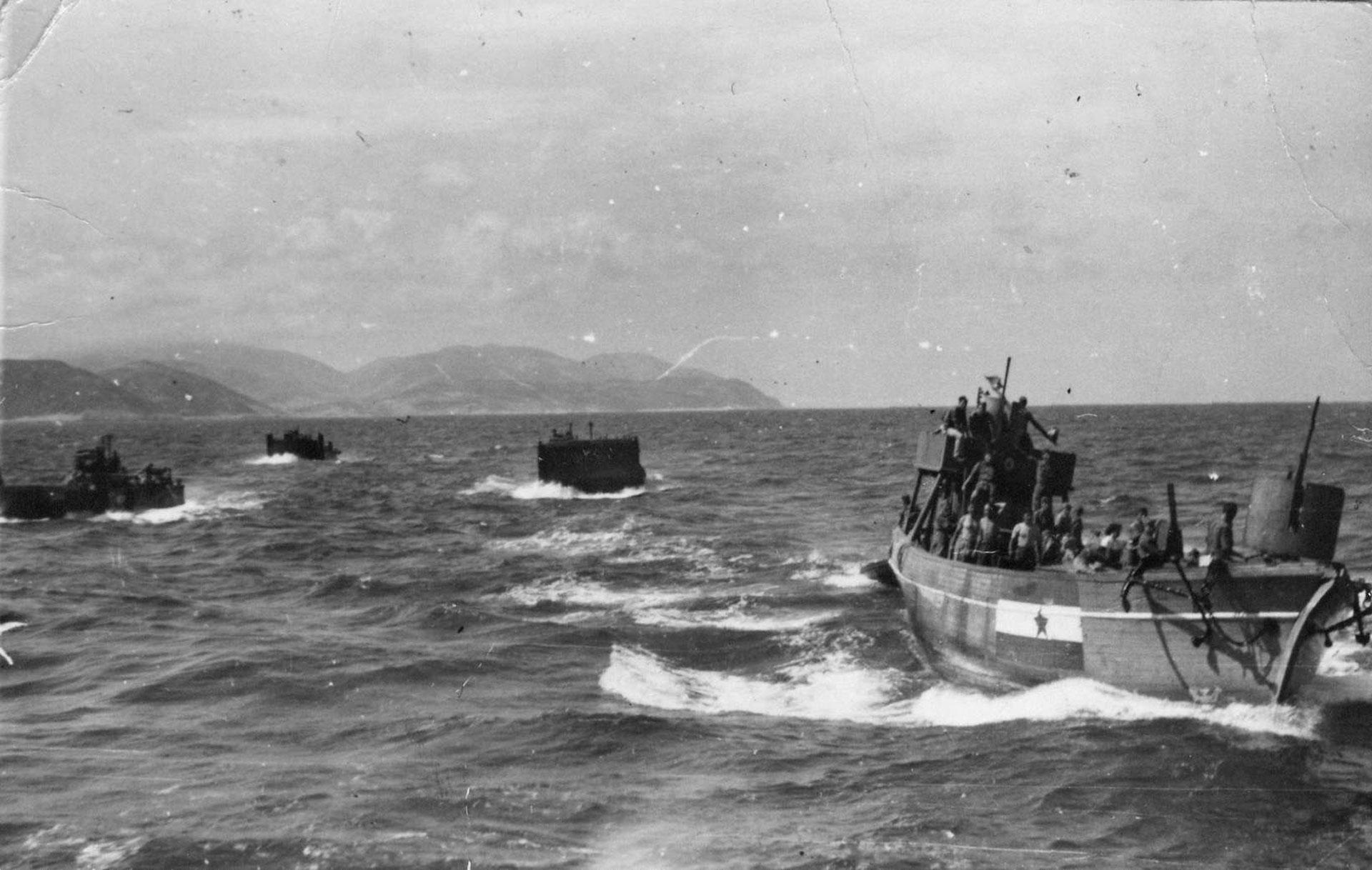The Yugoslav Partisan Naval Detachment
The Dalmatian coast with its many islands had not been a target for the Partisans in the early months of the war. This changed on the night of 22–23 January 1942, when a group of local Partisans attacked and took control of the coastal village of Gradac, in present-day Croatia. A day later, unbeknownst to the partisans, an enemy motorboat carrying over a hundred tonnes of food arrived at the dock. The Partisans captured the boat and took the food to the liberated Biokovo Mountain. Finally, the Partisans had their first ship.
The beginning of Partisan naval warfare under the Biokovo Mountain was not entirely accidental. The topography of these areas created a strong attachment of the local population to the sea, bridging the divide between the mountainous inland and the islands. As early as the 9th century, Venetian and Byzantine sources spoke of local pirates and merchants, and their land that stretched between the mouths of rivers of Neretva and Cetina. Apparently, the locals called themselves “Mariani”, the “people of the sea”.
A whole millenia later, the occupying Italian forces faced a growing naval insurgency. In February 1942, the Partisans captured another boat, and in May they sank two excavators. Enemy ships were usually intercepted, captured and/or sacked by the Partisans using leuts, small fishing sailboats typical for the area. On 10 September – later celebrated as Navy Day in socialist Yugoslavia – the first exclusively naval partisan unit was formed. It mounted machine guns onto its leut “Pionir” and frequently sailed between the village of Podgora and the island of Hvar. On the new year’s eve of 1943 they pulled off a feat by attacking a convoy guarded by the Italian Navy and captured six motor sailboats.
Just before this action, on 28 December, the first Naval Station was established in Podgora. Throughout 1943 the Partisans kept seizing new boats, and the largest expansion came with the fall of Italy in September 1943. Soon, the Partisan Navy boasted over ten armed boats and around 200 patrol vessels of various sizes, with some 3.000 staff and combatants. During major operations to liberate Dalmatia from the Germans in 1944, initiated from the island of Vis with the assistance of Allied forces, the Partisan Navy doubled in people but lost half of its vessels. Nonetheless, it carried a major role in landings, supply routes, and evacuation. By the end of 1944, most of the Yugoslav coastline was liberated.
Vladan Vukliš


